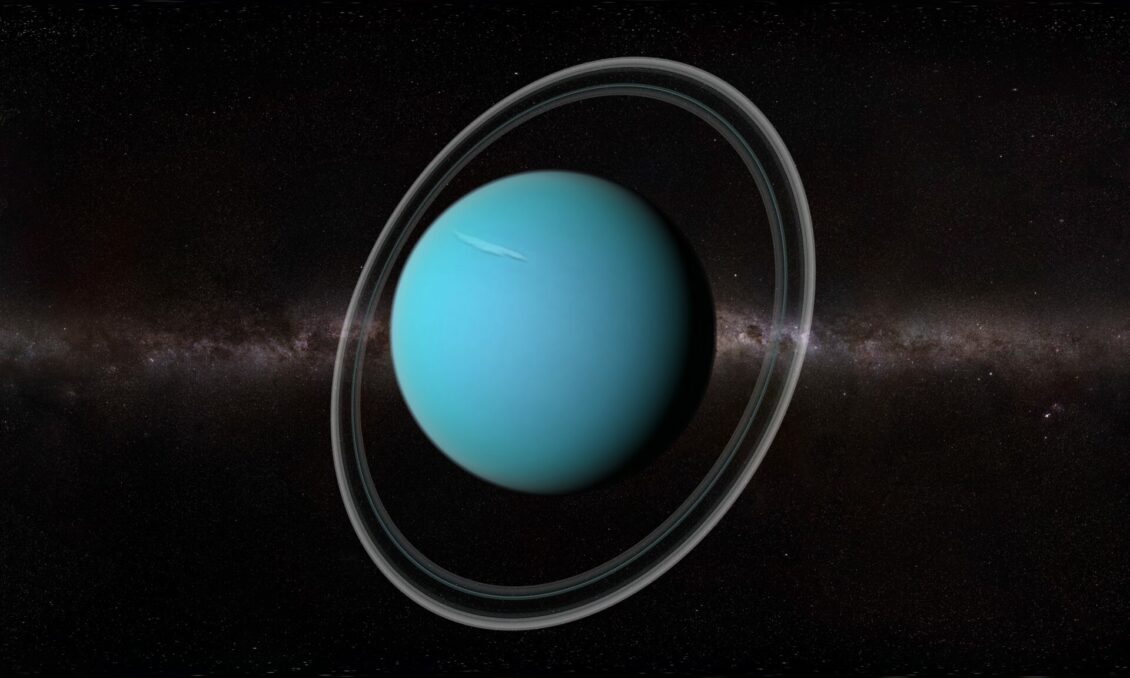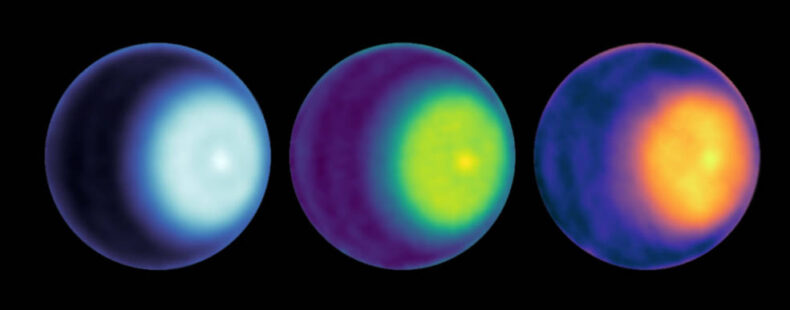In a revolutionary discovery, the scientists at the National Aeronautics and Space Administration (NASA) have reported the confirmation of a polar cyclone on the surface of Uranus. The event was observed on the North pole of the planet using ground-based telescopes that provided unparalleled views of Uranus, which was published in the journal Geophysical Research Letters.
By analysing radio waves released from Uranus, scientists discovered that the air moving around the north pole is likely to be warmer and dryer, which is a positive sign of a powerful storm. The findings support a general observation about all the planets in our solar system, which claims that the planets will always exhibit signs of a spinning vortex around the poles irrespective of their atmospheric composition.

The Significance of a Swirling Polar Vortex
According to the study’s principal investigator, Alex Akins, the evidence of a swirling polar vortex will allow scientists to examine the dynamic atmosphere of Uranus in a more nuanced and intricate manner. Scientists have long been captivated by Uranus because of its cold nature and isolated location in our solar system. However, the planet’s peculiar orbit has made it challenging to gain a complete understanding of its atmospheric processes.
Due to recent developments, researchers now have a better perspective of the planet because of its visible orbit, allowing them to learn more about its polar atmosphere. With the aid of enormous radio antenna dishes in New Mexico, researchers at NASA were able to look beyond the icy clouds engulfing the planet, to detect the presence of a polar vortex. This discovery probed Uranus’ atmosphere more deeply than any of the previous observations, which were made in 2015, 2021, and 2022.
The existence of a swirling structure on Uranus’ south pole has long been known to scientists. Voyager 2 is the only spacecraft that has successfully made a trip to Uranus in 1986. The methane cloud tops there were imaged by NASA’s Voyager 2 mission, revealing that the polar center had faster-spinning winds than the remainder of the pole. However, it failed to account for temperature changes around the poles. The new research published in Geophysical Research Letters depicts the effects of a swirling polar vortex on temperature changes.
The Composition of a Polar Cyclone

The dense atmosphere of Uranus is primarily made of hydrogen and helium, with a trace quantity of methane and other gasses. The lighter clouds are positioned above, and the heavier ones are in layers according to their weight. The compactly structured cyclone detected on Uranus resembles those observed by NASA’s Cassini at Saturn. With the exception of Mercury, which has no significant atmosphere, every planet in our solar system presently possesses cyclones or anticyclones.
Contrary to hurricanes on Earth, cyclones on Uranus and Saturn are locked at the poles and do not originate over water. Researchers will closely monitor the planet in the upcoming years to understand how the recently discovered cyclone develops. The polar cyclone detected on Uranus demonstrates a solid resemblance to the polar features that have been identified on other planets, which reveals the complex habitat of the blue planet.
The stage is set for additional research on this fascinating ice giant, with the National Academies’ 2024 Planetary Science and Astrobiology Decadal Survey emphasising on the exploration of Uranus. Planetary scientists are working hard to improve our knowledge of Uranus and its intriguing system in preparation for further missions.













